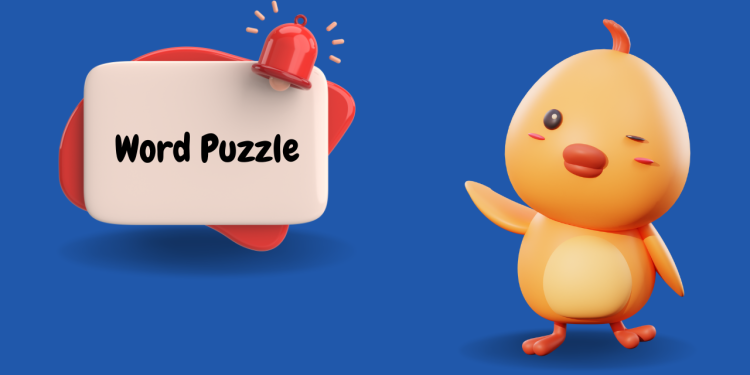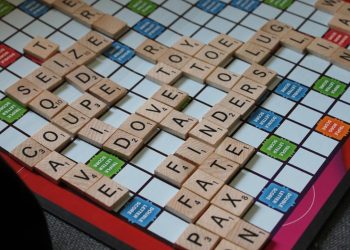Even with just six letters, Wordle became a part of everyday life for millions of different people living around the globe in the year 2022. Whether it be casual gamers or hardcore puzzle lovers, people were suddenly talking about their “streak” alongside strategy as well as colored squares. But how did this word guessing game become so popular? And the appeal to similar games years later remains strong, Why?
Let me elaborate.
The Reason Behind Wordle’s Addiction: Simplicity
As a product, Wordle is a guessing game where the player can make an attempt to guess a word containing five letters in it within six attempts. The letters turning green if they’re in the right position and yellow if they are somewhere in the word but in the wrong position depicts if they are correct. Not to mention, the algorithm comes without flashy graphics, timers or any form of eye catching tutorials.
Wordle’s simplicity contradicted it’s competitors and made it addictive. Unlike most modern games that bombard their players with countless ads alongside intricate details, Wordle offered a unique simplistic approach. The players could simply jump into the game, complete an easy round and carry on with the day.
And the most exciting part? Participants uploaded the same words onto their social media which furthered competition and discussions.
The Power of a Scarcity: One Puzzle Per Day
One of Wordle’s smart game mechanics was the limit of playing only one puzzle per day. It kept players able to return anticipating completing more puzzles. Wordle, unlike many others, was developed during a time when binge TV watching, social media and unlimited gaming was a hit. Other companies were providing players with infinite undiscovered content. Comparatively, it was a refreshing approach where people were given a small challenge with the intention of wanting more. This ties into business where adopting the mindset of limited drops means higher demand. Instead of providing endless unlimited products, stubborn marketing works.
The Social Media Boom: Why Everybody Was Talking About Wordle
If you were an active Twitter user at the beginning of 2022, the green, yellow, and grey boards were ubiquitous. People were not only interested in playing Wordle, they were actively sharing results and this caused players to be intrigued.
The game designer Josh Wardle built Wordle with a unique sharing feature. Players were able copy and share their results without revealing the answers using just the color emoji grid. This image allowed them to celebrate their victories, mourn over difficult words, and show off their linguistic talents without being irritating.
It also helped initiate discussions. If a player uploaded a sharing image with a hard puzzle, players who struggle with it would join in to share their strategies. Unlike online leaderboards that feel so distant, Wordle’s results were personal – like a secret society in which everyone was doing the same Wordle puzzle.
The Pandemic Factor: A Wordle Phenomenon
The times also frame the reasons for Wordle’s sudden popularity. It was liked by many in late 2021, and then exploded throughout early 2022, when people were still feeling the impacts of COVID-19. A lot of people had more free time to stay home, with limited options for mentally stimulating activities, and looking for simple ways to socialize.
Everyone turned to Wordle for those reasons. The game was puzzling yet productive to the mind, a good one to bring up in conversations, and a game that people could enjoy together regardless of distance.
The Psychology of Word Puzzles: What We Love About Them
Wordle was not the first viral word puzzle, nor will it be the last. People have been interested in word puzzles for illustrative ages (from crossword puzzles in newspapers to scrabble competitions). But why are they so fascinating?
The Satisfaction of Problem Solving – Solving a word problem causes the brain’s reward system to engage. Each correct guess provides a little hit of dopamine, reinforcing the action.
The Appeal of Pattern Recognition – Our brains are made to recognize Wordle, and easiest of all, tap into instinct, patterns. The more we play, the better we become in guessing words and spotting letter letters.
A Feeling of Mastery – Differing from general knowledge trivia word puzzles, feel like something that we could master over time. One gets better through constant practice, letting users engaged.
A Quick Mental Workout – Word games present the right amount of challenge that is mentally stimulating without being overly too difficult.
The Role of The New York Times: How Wordle Became a Brand
Everyone recognized how Wordle exploded in popularity. In January 2022, The New York Times purchased the game for a seven figure amount. This purchase solidified Wordle as more than a trend but a cultural phenomena resorted to alongside other celebrity word games, including the NYT Crossword and Spelling Bee.
The purchase resulted in some skepticism. Would the game become behind a paywall? Would it be easier? However, the New York Times kept Wordle’s structure intact, unlike other purchases, which made the game free and accessible.
This purchase also opened up a new trend, one that came with all types of spin-offs inspired by the game.
Wordle Spin Offs: The Rise of the “Wordleverse”
The purchase of the game inspired many imitations, which all offered something player or context based. A few of these include the following:
- Quordle- Four times the challenge of Wordle, complete four puzzles at once.
- Dordle- Two word version of Wordle, a lot harder than single word version.
- Nerdle- Math version of Wordle, containing numbers and equations, instead of letters.
- Heardle- Guess the song using short audio clips.
While preserving the primary mechanics that made the original game so engaging, these spin-offs provided new challenges which allowed them to keep the original Wordle craze alive.
The Enduring Appeal: Why We’re Still Playing Word Games
Although the initial viral wave of Wordle has died down, the love for word games is still very much alive. Many players have assimilated these puzzles into their daily habits just like how they check the news or complete a crossword in the morning.
Moreover, the supply of interesting and easy word-oriented games is perpetually on the rise. People enjoy the blend of challenge, social interaction, and mental stimulation offered by word puzzles. In a time when people equate increased screen time with mindless scrolling, games like Wordle provide a much needed change; one that is productive in the true sense of the word.
Try the Next Big Word Game: Puzzle Jam
If you love Wordle, get ready to Puzzle Jam—the newest and most engaging word game designed to challenge and entertain. Puzzle Jam is the best out of all classic word games offered, but also comes with exciting new elements to keep you interested.
Are you ready to test your vocabulary skills? Try Puzzle Jam today and challenge yourself to see how many words you can come up with.
Start playing now at PuzzleJam.io!














